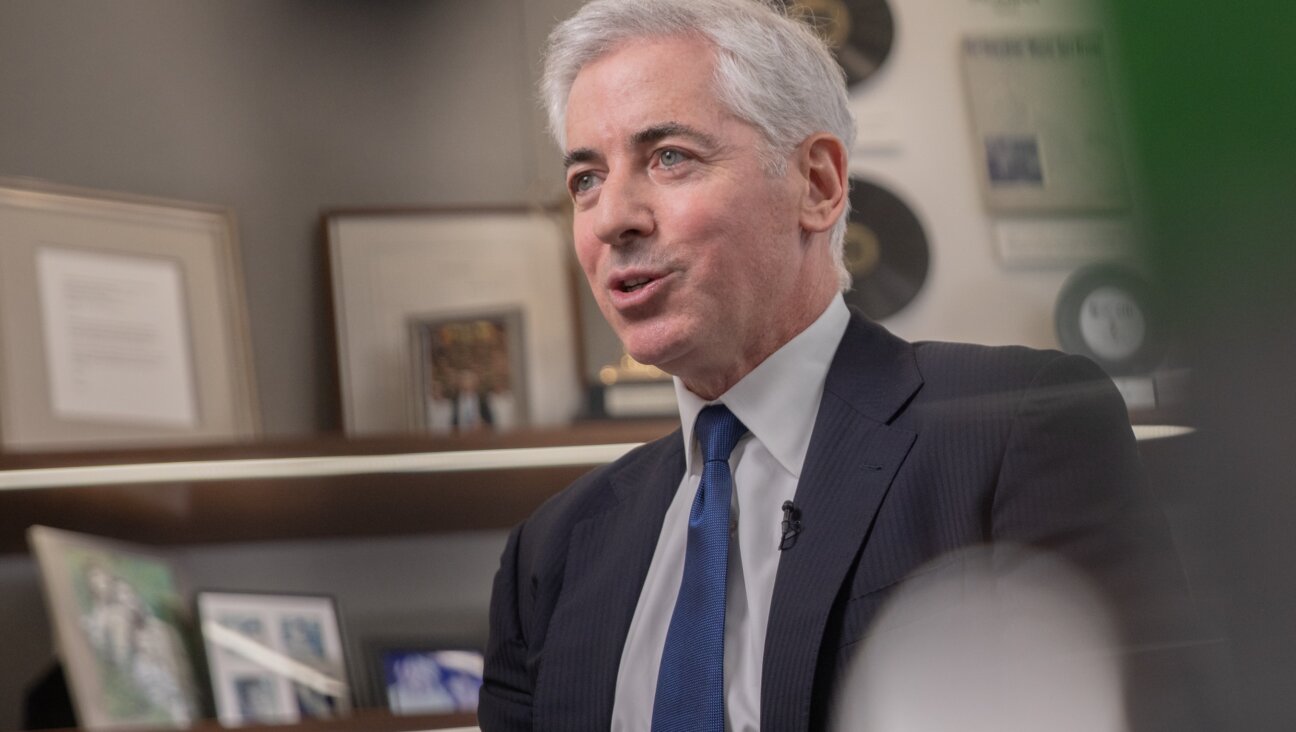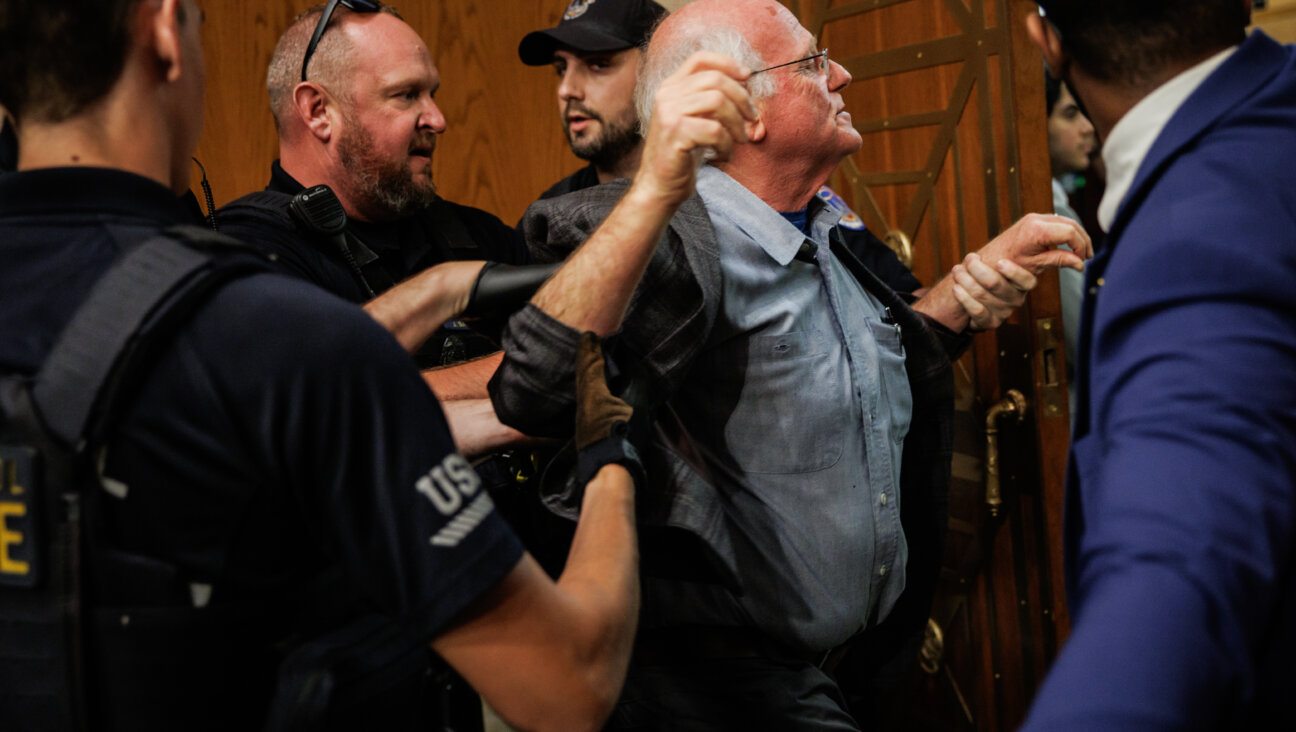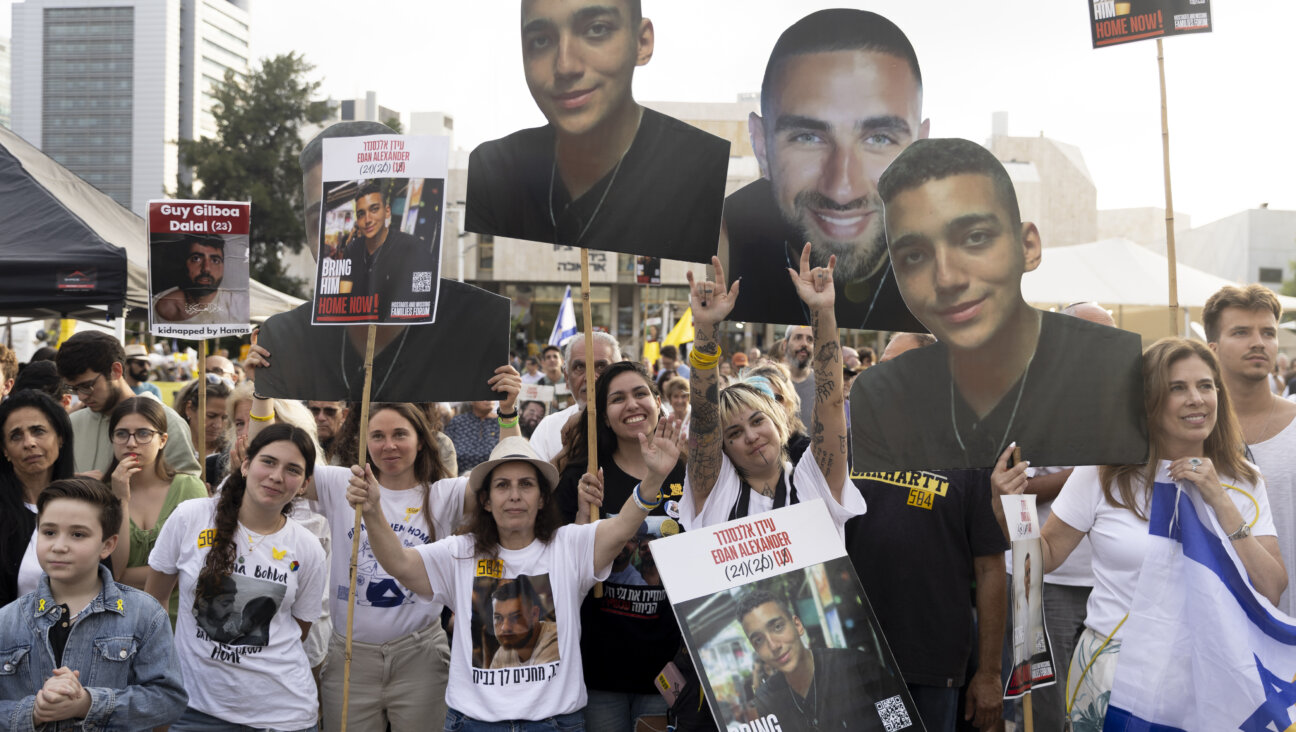Babi Yar at 75—Looking Back, From the Pages of the Forverts

Graphic by Angelie Zaslavsky
Nazi forces in the Soviet Union committed the Babi Yar massacre 75 years ago, over two days, on September 28 and 29. But like most of the world’s news media, the Forverts published news of the Babi Yar massacre only in 1943, when Kiev, the neighboring city, was liberated by the Red Army. A feature piece by Forverts writer L. Hendin—the pseudonym of Avrom Leyb Hendin—cited the work of the two American correspondents permitted access to the actual killing fields. The reporters, Maurice Hindus of the New York Herald Tribune and W.H. Lawrence of The New York Times, provided detailed accounts while Hendin, himself Ukrainian born, acted as the transmitter and commentator for Forverts readers. Many of those readers had relatives who perished at Babi Yar. They would learn of the murder of Kiev’s Jewry in Hendin’s story.
Forverts 11/30/43 p. 4
KIEV’S TRAGEDY–THE SLAUGHTER OF ITS JEWS
- Two American Correspondents Visited The City As The Russians Entered. They Saw The Destruction. The Beautiful Neighborhood Divided¬. 70 Thousand Survive Out Of Over One Million People. New Horrifying Details Of How The Jews Were Shot To Death *
By: L. Hendin
It would seem we’ve all become accustomed to the hideous nature of the Nazis. We’ve heard enough about their sadistic murderous ways. We’ve read enough how the Nazis tortured Jews to death. The last tragic chapter of Jewish martyrology, the Warsaw Ghetto, is still fresh in our minds. Each of us has had their hair stand on end more than once, our blood has frozen in our veins reading of the news, now confirmed, that the Nazis poisoned Jews with lethal gas in order to save on bullets after which soap was produced from Jewish corpses. Frequently our thoughts couldn’t perceive such frightful hideous facts. Truthfully, were we able to take it all in deeply we’d go out of our minds.
But, as it happens, we’ve not heard it all…there’s more to receive…the curtain on the Jewish tragedy will still be rising after the War. The civilized world will witness that the Jews paid the highest price during this War.
A number of American correspondents over the last few days have arrived in Kiev. It’s the first time American correspondents have been here since the Red Army took Kiev. They all sent back reports with ghastly details about Kiev’s tragedy and the mass murder the Nazis led against the Jews. As it happens, this is the worst tragedy that we’ve yet listened to, perhaps even noted at all, with the possible exception of the Warsaw Ghetto.
The two acclaimed American correspondents, Maurice Hindus of the New York Herald Tribune, and W.H. Lawrence of The New York Times, sent detailed accounts from Kiev. Their reports are a foundational investigation into terrifying acts the Nazis perpetrated in Kiev, and their reporting was corroborated by the accounts of witnesses who saw the horrifying tragedy.
Kiev was considered among Russia’s most beautiful cities. The writer of these lines knows the city well. I spent over one year there. Aside from its magnificent streets of Kiev, is replete with nature’s wonders, due to being built on six mountains. And just as the Hudson flows at banks of the Island of Manhattan, so the glorious Dnieper River flows at the edge of Kiev, lending the city much charm.
Kiev is the third largest city in Russia. Before the War it numbered over a million people and when the Red Army entered it, they found only 70,000 people. What happened to the million people of Kiev? There is currently in Kiev a Soviet research commission gathering all facts about the Nazi atrocities there…. One can imagine the majority of residents escaped. But it’s also rapidly becoming apparent that the majority of the 70,000 who remained lived in cellars and didn’t see the light of day for months. When the Red Army entered the city it met a skeletal looking starving population. It was frightening to look at them.
Prior to the War about 100,000 Jews lived in Kiev. The American correspondents know details of their fate now. It’s likely that 30,000 Jews in 1941 attempted to escape prior to the Nazi invasion. The Nazis murdered the remaining 70,000 Jews in the most brutal manner. There remain a few Jews in Kiev who can be counted on the fingers of one hand.
The American correspondents were quite curious to uncover the details of the Nazi led mass-murder of Kiev’s Jews. They talked to a few people and heard a myriad of tales but couldn’t fathom how the slaughter took place. The real information was given the correspondents by the Soviet investigating commission into the Nazi atrocities.
Pavel Alyoshin, a Kiev architect is a witness . He stated that in September 1941, nine days after the Nazis captured Kiev; they ordered all Jews to report in the Lukyanovker district. That area of Kiev is well known to everyone. It’s currently the where the Soviet investigating commission is holding its hearings. The architect Alyoshin told the commission that Kiev’s Jews didn’t know the terrifying fate that awaited them. They thought they were called to gather there because the Nazis wished to evacuate the Jews from Kiev. The Kiev Jews had heard about the murderous Nazis and what had transpired in Poland and other occupied parts of Europe but apparently didn’t imagine the Nazis would seek to murder Jews who were Soviet citizens. The majority of the Jews, therefore, took along their meager remaining belongings to the gathering place they were ordered to. But when they gathered in the Lukyanivska area at the designated location near ‘Babi Yar,’ a vast ravine in the region, Nazi soldiers shot them all. They then ordered Soviet prisoners of war to dump the corpses in the ‘Babi’ ravine. Alyoshin stated that he himself didn’t witness these events. But, he said, everyone in Kiev knew about it, and he had spoken to several people who provided the details.
The same Soviet investigating commission produced three Jewish military prisoners of war who had managed to escape from the Nazi concentration camp. The three Jews are: Efraim Vilkis, an Odessa native—a splendid, well built handsome youth of 33 years; Leonid Ostrovsky, who is 31 years-old, and Vladimir Davidov, 28. These three Jewish POW’s didn’t witness the slaughter, but witnessed how the Nazis, prior to leaving Kiev several months ago, exhumed Jewish corpses in ‘Babi Yar.’ and with a variety of chemicals burned them all in order to eliminate all traces of the hideous mass slaughter.
The witnesses told how the fire was so terrifying and the chemicals had so intensive that even the bones of the corpses disintegrated entirely. The Nazis mostly seemed not to want the Russians to be able to gather any knowledge as they were able to via their investive commissions at Stalingrad and Kharkov.
The main witness at the Soviet investigation commission was actually Efraim Vilkis. He told of being a POW in a Nazi concentration camp near ‘Babi Yar.’ On August 14, 1943, the camp received 100 prisoners-of-war, he related. The Nazis told them they were to serve a unique purpose. Among the prisoners-of war were Vilkis, Ostrovsky and Davidov. Together with others, they were led to ‘Babi Yar,’ and ordered to exhume the ravine, where Jewish corpses were to be found.
Vilkis stated that it was one of the most torturous scenes he’d ever encountered in his life. The martyred Jews were laid out in lines by the hundreds, one atop the other. After the bodies were disinterred, the prisoners were ordered to make a chemical fire. Vilkis confirmed that many of the prisoners got sick at that point and some lost their minds. Nazi storm troopers standing nearby began shooting the POW’s who absolutely refused to obey.
Bodies of the Jewish martyrs were cremated over three days. By chance, in the middle of the night, the three Jewish prisoners-of-war were able to escape. Prior to their escape, Vilkis told the commission, he saw the Nazis bring a few hundred more prisoners-of-war to complete the job. He also saw the Nazis make a new fire at an empty place in the ravine. The POW’s suspected that fire would be used to incinerate them as well so that no evidence of this horrific crime would remain.
After the American correspondents listened to the testimony, they were led to ‘Babi Yar’ to gain confirmation there themselves. All the correspondents confirm the Nazis did a thorough job. Here and there they found some evidence that gave an indication of the horrifying tragedy.
The correspondent Maurice Hindus also offered details about the vast tragedy and destruction of Kiev itself. He showed that the physical destruction of Kiev was perhaps not as vast as that of Kursk, Orol, Stalingrad, or Kharkov but the city appears more forlorn, more tragic than the others.
Krestchatik, Kiev’s main street, the 5th Avenue of Kiev, is in ruins. Krestchatik was the pride of Kiev’s citizenry. It was wide and held all the large stores and shop windows full of wondrous displays. Now, Morris Hindus says, there’s not one fully standing building on Krestchatik. Everything’s broken, smashed and destroyed. The fancy area of Kiev, Lipky, is completely wrecked and ghostlike. The Nazis burned Kiev’s two largest hotels before they abandoned the city. There’s no undamaged street in Kiev. Wherever one walks or stands one sees the murderous hands of the Nazis.
As it turns out though it’s not that simple to completely wreck such a large city. Morris Hindus notes that despite the vast destruction, here and there one can find signs of the city’s beauty. An elderly Russian professor from Kiev quite rightly remarked to Hindus that buildings can be repaired, the destruction can be set to rights. But the tens of thousands of people the Nazis murdered–their lives cannot be recovered.






















